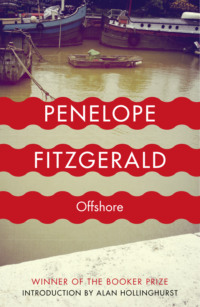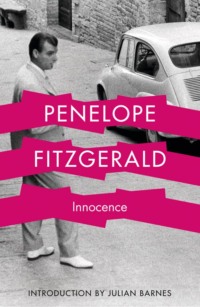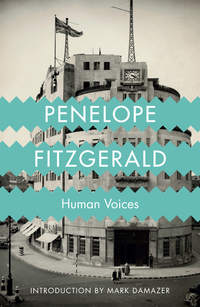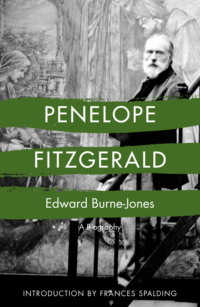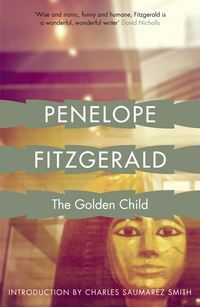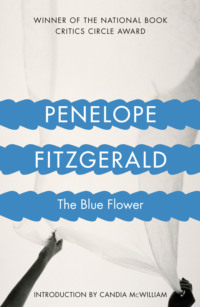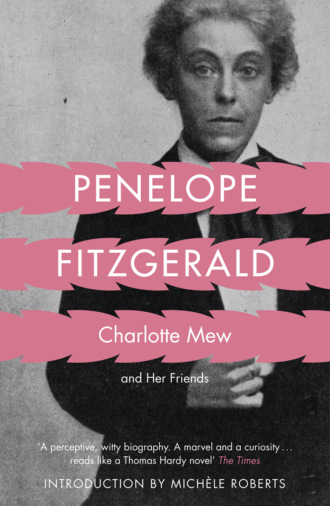
Полная версия
Charlotte Mew: and Her Friends

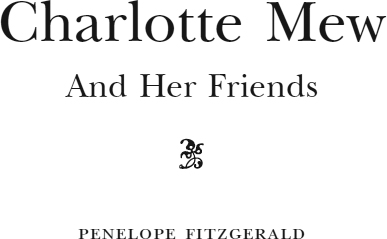

Dedication
In memory of
THE POETRY BOOKSHOP
Contents
Cover
Title Page
Dedication
Preface
Introduction
1: The Day of Eyes
2: Love between Women
3: Lotti
4: ‘These I Shall See’
5: A Yellow Book Woman
6: The China Bowl
7: Nunhead and St Gildas
8: Rue Chateaubriand
9: The Quiet House
10: The Farmer’s Bride
11: Mrs Sappho
12: May Sinclair
13: ‘Never Confess’
14: The Poetry Bookshop
15: Alida
16: ‘J’ai passé par là’
17: Sydney
18: The Shade-Catchers
19: Delancey Street
20: The Loss of a Mother
21: The Loss of a Sister
22: Fin de Fête
Selected Poems of Charlotte Mew
The Farmer’s Bride
In Nunhead Cemetery
The Changeling
Ken
A Quoi Bon Dire
The Quiet House
Madeleine in Church
The Shade-Catchers
Saturday Market
Sea Love
From a Window
Not for that City
Fin de Fête
I so liked Spring
The Trees Are Down
Appendix: A Note on the Poetry Bookshop Rhyme Sheets
Select Bibliography
Index
Acknowledgements
Notes and References
Also by the Author
Copyright
About the Publisher
Penelope Fitzgerald
Preface by Hermione Lee, Advisory Editor
When Penelope Fitzgerald unexpectedly won the Booker Prize with Offshore, in 1979, at the age of sixty-three, she said to her friends: ‘I knew I was an outsider.’ The people she wrote about in her novels and biographies were outsiders, too: misfits, romantic artists, hopeful failures, misunderstood lovers, orphans and oddities. She was drawn to unsettled characters who lived on the edges. She wrote about the vulnerable and the unprivileged, children, women trying to cope on their own, gentle, muddled, unsuccessful men. Her view of the world was that it divided into ‘exterminators’ and ‘exterminatees’. She would say: ‘I am drawn to people who seem to have been born defeated or even profoundly lost.’ She was a humorous writer with a tragic sense of life.
Outsiders in literature were close to her heart, too. She was fond of underrated, idiosyncratic writers with distinctive voices, like the novelist J. L. Carr, or Harold Monro of the Poetry Bookshop, or the remarkable and tragic poet Charlotte Mew. The publisher Virago’s enterprise of bringing neglected women writers back to life appealed to her, and under their imprint she championed the nineteenth-century novelist Margaret Oliphant. She enjoyed eccentrics like Stevie Smith. She liked writers, and people, who stood at an odd angle to the world. The child of an unusual, literary, middle-class English family, she inherited the Evangelical principles of her bishop grandfathers and the qualities of her Knox father and uncles: integrity, austerity, understatement, brilliance and a laconic, wry sense of humour.
She did not expect success, though she knew her own worth. Her writing career was not a usual one. She began publishing late in her life, around sixty, and in twenty years she published nine novels, three biographies and many essays and reviews. She changed publisher four times when she started publishing, before settling with Collins, and she never had an agent to look after her interests, though her publishers mostly became her friends and advocates. She was a dark horse, whose Booker Prize, with her third novel, was a surprise to everyone. But, by the end of her life, she had been shortlisted for it several times, had won a number of other British prizes, was a well-known figure on the literary scene, and became famous, at eighty, with the publication of The Blue Flower and its winning, in the United States, the National Book Critics Circle Award.
Yet she always had a quiet reputation. She was a novelist with a passionate following of careful readers, not a big name. She wrote compact, subtle novels. They are funny, but they are also dark. They are eloquent and clear, but also elusive and indirect. They leave a great deal unsaid. Whether she was drawing on the experiences of her own life – working for the BBC in the Blitz, helping to make a go of a small-town Suffolk bookshop, living on a leaky barge on the Thames in the 1960s, teaching children at a stage-school – or, in her last four great novels, going back in time and sometimes out of England to historical periods which she evoked with astonishing authenticity – she created whole worlds with striking economy. Her books inhabit a small space, but seem, magically, to reach out beyond it.
After her death at eighty-three, in 2000, there might have been a danger of this extraordinary voice fading away into silence and neglect. But she has been kept from oblivion by her executors and her admirers. The posthumous publication of her stories, essays and letters has now been followed by a biography (Penelope Fitzgerald: A Life, by Hermione Lee, Chatto & Windus, 2013), and by these very welcome reissues of her work. The fine writers who have done introductions to these new editions show what a distinguished following she has. I hope that many new readers will now discover, and fall in love with, the work of one of the most spellbinding English novelists of the twentieth century.
Hermione Lee
2013
Introduction
A true poet is first of all appreciated by his or her peer group. Critical recognition usually arrives afterwards. Charlotte Mew’s work was admired by writer contemporaries such as Siegfried Sassoon, Thomas Hardy and Virginia Woolf. Hardy said: ‘She is far and away the best living woman poet, who will be read when others are forgotten.’ Virginia Woolf said: ‘I think her very good and interesting and unlike anyone else.’
Mew’s words, coming powerfully alive on the page, also electrified audiences when she read her poems aloud. Penelope Fitzgerald, writing this biography, comments: ‘she seemed not so much to be acting or reciting as a medium’s body taken over by a distinct personality.’ Poetry in performance was relished in the early twentieth century as it is now, a hundred years later. The equivalent of our open mic poetry slam happened in the Poetry Bookshop in Bloomsbury, decorated with hand-coloured poetry posters, hung with curtains of sacking. People packed into the upstairs room and listened by candlelight. Between 1913 and 1920 you could attend readings by writers as diverse as Rupert Brooke, D. H. Lawrence, Edith Sitwell, Eleanor Farjeon, Anna Wickham and W. B. Yeats (among many others). Alida Monro did much of the work of the bookshop, alongside her poetry-publisher husband Harold. She often gave readings of the work of absent poets. She loved Mew’s poems, and in November 1915 invited Mew to come and hear her read them. Thus their long friendship began.
Mew, signalling her originality and difference through her words, also did so through her hoarse voice and her distinctive clothes. A tiny figure in a plain dark coat and skirt, severely cut, she sported a white shirt and black cravat, red stockings on occasion, and wore her hair cut short. She rolled her own cigarettes. She had an oval face, and huge eyes, which blaze out at us from her photographs.
Growing up in the aspirant London middle class, child of a struggling-architect father and snobbish mother, Charlotte was required to appear ladylike, decorative and genteel. However, her family’s financial misfortunes after her father’s death meant that she also needed to make a living. Like many another ambitious young woman before and after her, she decided to earn money by writing. She had an ailing mother to look after, housework to do, lodgers to tend, but she carved out a space in which to create short stories and poems. She travelled, too, in northern France, and explored new freedoms abroad, including trying out dancing the can-can, and hanging out with the sailors loafing along the quays. She fell passionately in love more than once, and endured the bitterness of sexual rejection. She made few but close friendships, with people who respected her shyness and contradictoriness.
These friends gave her the encouragement every writer needs to go on writing. The ruthless drive to create may be experienced as an internally produced one, but needs external validation too. This is probably even more true if you are breaking moulds, as Mew did. Coming after the Victorians and before the modernists, she invented a new music in poetry, a new kind of line, irregular and urgent, employing monologue forms, voices (often male) whose utterances seem to echo free-association, irregular rhythms that thump like the blood of a disturbed heart. The poems dramatise and rehearse themes of sexual longing and frustration, family crises, madness, creativity, childhood, cruelty. They are powerful, upsetting, whimsical, amoral.
A poet may become famous in his or her own day, then fade from sight when fame’s light swivels elsewhere. Time is conventionally supposed to tell whether someone’s work will last, to be admired afresh by future generations. In this view, history acts as a sort of sieve, reliably separating the wheat from the chaff. However, human agency is required alongside. If someone does not keep your name in the papers, your work in print, your books on the educational syllabus and in the literary canon, then your name may be temporarily forgotten, until you are rediscovered. Charlotte Mew, championed by distinguished male editors such as Harold Monro in her lifetime, was ignored by later ones, her poems left out of their anthologies; omissions which had the effect of falsifying and distorting the literary map. Nonetheless, Mew’s work went on being valued by successive waves of readers unafraid of appearing unfashionable. The scholar Val Warner produced a complete edition of her poems and prose in 1981. Then, in 1984, Penelope Fitzgerald published Charlotte Mew and Her Friends, which drew attention all over again to this remarkable writer. This reissue of that fine biography will, I hope, introduce a new generation to the fascinating, strange, vivid world of Mew’s poetic imagination.
Penelope Fitzgerald was writing fiction at the same time as working on her biography of Charlotte Mew, which allowed her to muse about how the two forms differed and overlapped. Her own biographer, Hermione Lee, quotes her joking: ‘On the whole I think biographers are madder than novelists.’ Fitzgerald also wrote: ‘I think you should write biographies of those you admire and respect, and novels about human beings who you think are sadly mistaken.’ She considered that fiction’s advantage over biography was that it could contain dialogue, which of course the writer made up. As a biographer, she was diligent with her research, committed to facts and to truth. As a novelist writing biography, she occasionally allowed herself to speculate in a minor way. For example, speaking of the death in childhood of Charlotte’s younger brother, she says: ‘Charlotte, at seven years old, was certainly brought in, as elder sisters were in the 1870s, to see her little brother “in death”.’ She offers no direct evidence for this, simply invites us to imagine an experience.
When you write fiction, you may try to create the subjective emotional truth of a character, the way she is for herself, thoughts and feelings constantly shifting and changing. You may try to imagine a character’s hidden, secret, inside world, composed of visual images, snatches of music, fragments of overheard talk, bits of memory, currents of physical feeling, all involved in a whirling dance. All this richness, linguistic and non-linguistic, has to be translated into connected words, put into sentences, arranged in narrative order, the timeless moment subdued to the constraints of time. Form and pattern emerge; the novel embodies the process of its making.
As a biographer, you necessarily work more from and on the outside. Fitzgerald respects Mew’s private self, and seems to be protective of it, even as she shows that her subject’s sense of privacy was linked to her sense of what the wider society could and could not tolerate. Mew desired and fell in love with women, but could not discuss her feelings; not even with a close friend such as Alida Monro. Since she was not a feminist, not even a suffragist, she was cut off from the friendship of the lesbian women who found each other through those political movements. On her trips to Paris she had no access to the lesbian coteries and salons that flourished there. Sooner or later she had to return to a world of constraints; and to sexual loneliness.
Some writers keep their patterns of disorder-into-order firmly inside themselves, firmly inside their rough drafts. Others need to live them out, to break away from limiting codes of conduct, take risks and make experiments. Outsiders, critics, looking at a writer’s apparently messy life and relationships, messy writing-room, may express uncomprehending disdain. But the writer, the poet, whether she prefers her mess to be metaphorical or literal, or a mixture of the two, needs to embrace her chaos. She needs to take inherited structures of grammar, inherited lexicons, break them up, see what she can make with them. She needs to play, both ferociously and tenderly; eagerly to destroy, patiently to rebuild. She may need to destroy, play with and reinvent inherited rules of relationship. On her own serious terms.
At considerable cost to herself, Charlotte Mew triumphed. She achieved the writing of poetry of beauty, originality and intensity. In a culture that regarded poetry as a supremely male vocation (niches were granted to poetesses writing ladylike verses) she made her voice heard.
How did she do it? Penelope Fitzgerald’s answer is that she divided herself in two. She maintained an outer, decorous, feminine persona, which Fitzgerald names Miss Lotti, the nice girl, passive and chaste, a disguise which hid the passionate, wilder persona, the artist, Charlotte, the ‘savage who threatened her from within’. As a survival technique, this proved exhausting: the divided self enacted a perpetual struggle, the ‘good’ self savagely fighting and punishing the ‘bad’ one. Perhaps this was an internalised version of battles begun in childhood. As a small girl, Charlotte Mew was taught gloomy Nonconformist piety by her nurse, for whom the human condition meant sin, judgement, rejection and guilt. Apparently she both loved and feared this nurse. How could she have escaped being damaged by her bleak, punitive, hell-threatening religion? Fitzgerald (herself a compassionate Anglican) does not explicitly suggest that Charlotte Mew’s inner struggle, one part of herself waging war on the other, may have acted out a version of the small girl’s drama with her nurse, but I let myself speculate that that is possible. In her later life Charlotte was described by one of her women friends and patrons as ‘a pervert’. What was perverse was the power relationship inflicted by the nurse.
Nonetheless, despite these wounds, out of them, Charlotte made unforgettable poems. The same puzzled friend was able to recognise her as a genius.
Penelope Fitzgerald’s biography is motivated not only by writerly admiration but also by sympathetic interest. Fitzgerald writes with just enough detachment: not too little and not too much.
A biographer certainly needs to be scholarly and patient; intellectually capable and alert; knowledgeable and well-read. Also, given that modern biographies deal so much with their subjects’ personal and emotional lives as well as their worldly achievements, a biographer needs to cultivate empathy. Empathy means to feel with. To feel with your subject on her own terms as well as yours. A biographer who is shocked or upset by unconventional behaviour, passionate emotion, apparently ‘childish’ desires and needs, may fall back on expressions of moral superiority, or may start scolding. Women who break out of what’s expected of them, in order to live and write differently and originally, are not saints, and should not be idealised in hagiographies, but neither should they be mocked, labelled as neurotic. Penelope Fitzgerald employs a tone I think of as characteristic, which we note when we read her reviews: sharply intelligent, wry, often humorous, always trying to be fair and non-judgemental.
The tone of this biography suggests an equal relationship between biographer and subject, one based neither on heroine-worship nor the need to dominate. It suggests the enactment of a relationship between friends, walking and talking, relishing together the comedy of the grubby London streets they both loved.
At the same time it functions occasionally as a kind of dark mirror of its author. We know from Hermione Lee’s biography of Penelope Fitzgerald that the latter was ‘adept at evasions and self-editing’, faced many difficulties in her domestic life, and drummed up quietly heroic courage to deal with them. From time to time, as she writes about Charlotte Mew, we glimpse Penelope Fitzgerald’s admiration of stoicism and reticence, and her understanding of the need for masks and concealment. This biography is necessarily a chronological narrative but it dramatises an eternal moment: one unconventionally minded woman recognises another, salutes the other, across the gap of years, as both different and similar. At the same time both writers beckon the reader to follow them into their coincident worlds.
Michèle Roberts
2014
Конец ознакомительного фрагмента.
Текст предоставлен ООО «ЛитРес».
Прочитайте эту книгу целиком, купив полную легальную версию на ЛитРес.
Безопасно оплатить книгу можно банковской картой Visa, MasterCard, Maestro, со счета мобильного телефона, с платежного терминала, в салоне МТС или Связной, через PayPal, WebMoney, Яндекс.Деньги, QIWI Кошелек, бонусными картами или другим удобным Вам способом.




